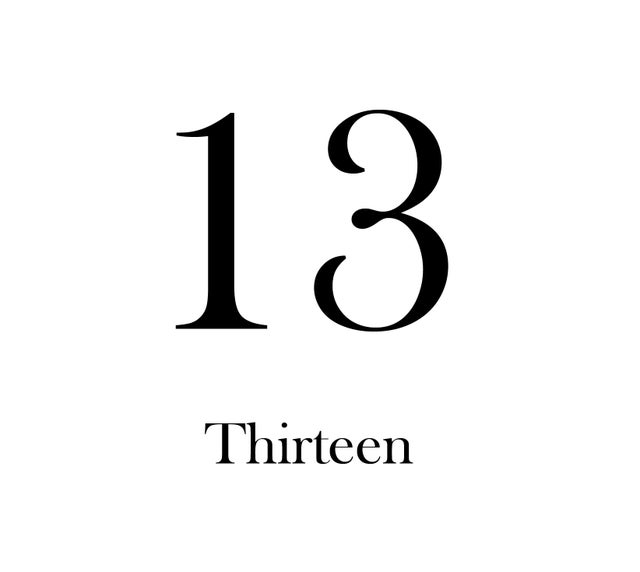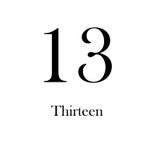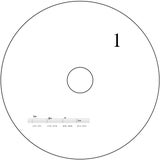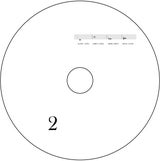- Michael Pisaro-Liu
- >
- Keith Rowe/Michael Pisaro - 13 Thirteen (2CD)
Keith Rowe/Michael Pisaro - 13 Thirteen (2CD)
SKU:
$21.00
$21.00
Unavailable
per item
Erstwhile 085-2
A collaboration between composer Michael Pisaro and AMM guitarist/improviser Keith Rowe, with each bringing scores which they improvised over, creating 13 discrete sections including samples from Shostakovich's 13th String Quartet, balancing activity, space and silence in patient ways that only two such experienced composer/improvisers could. Six-panel digipak.
For lossless (16/44) files, go to this page.
|
TRACK LIST
Disc 1 1. (1:12:05) Disc 2 1. (1:08:05) (released May 31, 2017) CREDITS
recorded by Julien Ottavi in Nantes, France in May 2016 mixed by Michael Pisaro mastered by Taku Unami cover art by Keith Rowe design by Yuko Zama produced by Jon Abbey and Yuko Zama |
REVIEWS
Marc Medwin, Dusted It has always been fascinating to contemplate the sounds emanating from the ocean floor. What happens when the immediate silence of submersion grows, deepens and is ultimately inhabited and transcended? Listening to this compositional and improvisational collaborative effort, involving two musicians for whom all such boundaries eventually blur and fade, kept bringing such long-nurtured contemplations to mind. Apparently, the two-disc work’s 140-minute length and 13-part form were determined by the pair, composition was undertaken separately and then, the composed music received an additional layer of collaborative improvisation. I’m going to guess that Rowe’s material is mainly in the right channel and Pisaro’s in the left, but there’s also plenty of overlap, more boundaries rendered the playthings of these two adventurous minds. On one level, and not surprisingly, we have an encyclopedic dissection of the guitar, a simultaneous deconstruction and presentation of its myriad possibilities. All manner of dynamic and coloristic subtleties are in play, heavily nuanced, as the pair plucks, sustains, pats, thumps and slides through a seemingly infinite array of timbres that, despite contextual detachment, still maintain a quality of signification. Both players come from such broad backgrounds of influence, encompassing multiple and seemingly disparate genres as well as a fundamentally experimental approach to listening and playing, that anything is possible and often occurs as nearly two and a half hours roll effortlessly by, but the guitar is only a variable in a complicated equation. Rowe’s vocabulary has been a long-fostered work in progress, a development of micro-detailed and hyper-dynamic drones, buzzes and scrapes, all adorned with and articulated by tone and space. Similar comments might be made of Pisaro’s sonic palette, most directly heard in his sinewave composition, each complex sonority a treasure-trove of neo-Lucierian beats first fully manifest in his magnificent and epic Transparent City series. Here, we hear more guitar than might have been expected, a real pleasure, as guitar and sinetones inhabit the same universe of shimmering beet and sustain. What emerges, collectively, after all attempts to break everything down by degrees come to nought, after moment-to-moment occurrence and glacial temporal sweep come to terms with each other, is a dramatic structure devoid of any sense of Western music’s climax. In a late 1950s interview, Pierre Boulez pointed toward “the East” as exhibiting musically formal and temporal traits with which we Eurocentric descendants have yet to engage, and this music is rife with them. Jets of tone exert propulsive force, excite streams and rivers of hot and cold sustain toward motion. Small metallic explosions induce shockwaves, carving channels through varying densities of liquid and solid that freeze the molten and melt icy structures to heated fragments tossed by waves that then submerge them. Amidst it all, catalyzing the Protean process blending interchange and sea change, is something it would be too simplistic to call silence. It’s always there without ever really materializing, a constant, akin to the baroque Basso Continuo against which this new chamber music unfolds in counterpoint. All sounds emerge from it and return to it; they constitute the vibrancy beneath, the sometimes shocking but always beautiful artistic energies that surface and are gone. Given the increasing dearth of sonic space in our current cityscapes, that approach toward silence, those vast vistas of space and this music are more radical and radically important than they’ve ever been. Like Pisaro’s soundscapes depicting a nameless archetypal city and Rowe’s monumental but essential vision of something as fundamental as a room, this music took immense courage to create, the courage only exploration and discovery can reward. Michele Palozzo, esoteros It is almost impossible for us to imagine an existence beyond good and evil, depersonalized and free from positive or negative connotations: total immobility – something closer to non-existence – would be necessary in order to no longer give rise to the meaning that permeates every aspect of our sensory experience. Following quite different paths, the English dean Keith Rowe and the American composer Michael Pisaro have long sought a clear detachment from pre-established forms: the former laying the foundations of free improvisation with AMM, “unlearning” his approach to the guitar by laying it horizontally; the latter starting from Cage’s lesson to give shape, together with the composers of the Wandelweiser collective, to a para-musical aesthetic that makes use of silence as a pure and primary (non)color of the palette. Only in very recent times has Rowe’s art, already originally permeable to external radio frequencies, finally covered itself with a nostalgic veil: echoes of late-nineteenth-century symphonies return as a quiet undertow from domestic shelves, mixing shadows of the past with a barely noticeable room tone. Faced with this unprecedented expressive fragility, even the strings of Pisaro’s guitar seem to be tinged with painful awareness, often dwelling on minor tones that, by reflex, cast a languid light even on his distinctive short waves – practically the elementary cells of drones. One of the possible references of the numerical title 13 Thirteen is to be attributed precisely to the late number pieces of Cage (a work was commissioned and written in the year of his death for thirteen instrumentalists): but more specifically it refers to the volatile quotes from Shostakovich’s thirteenth string quartet, four excerpts “evoked” by Rowe and which ideally subdivide the present work into as many sections. Among these laments from the past made present take form the two authors’ sparse scores, some fragments of which are shown in the total-white packaging; however, there is ample space for moments of quiet improvisation, more easily recognizable on Rowe’s part in his tested, delicate scratching on the surface of the strings. A duration of about 130 minutes may seem almost light when compared to the quadruple CDs in which the British performer has recently ventured (enough still not to know with John Tilbury and the monumental requia The Room Extended). But it goes without saying that, once again, the wide delays with which the various interventions manifest themselves cancel the discernment of the passage of time, simulating the immersion in an absolute space-time apparently exempt from any standard dynamics and within which even the dialogic nature of the piece is confused in the inscrutability of the alea. Recorded in Nantes on 27 May 2016 at APO33, “interdisciplinary artistic, theoretical and technological laboratory”, the duo’s work is rightfully published by Erstwhile, the same label who has supported and inspired their respective projects for several years. From these giants of the most radical contemporary avant-garde, nothing could be born other than a poem of reduction as vast as it is slender, without word or meaning beyond the very presence of sound in its most limpid and transitory form. Marc Masters, Pitchfork On this two-and-a-half hour, semi-improvised opus, the two guitarists and composers approach finely wrought detail and vast empty space in ways that can warp one's perception of time itself. The first recorded collaboration between veteran guitarists Keith Rowe and Michael Pisaro is dauntingly ambitious. Before making a note of music, the pair decided 13 Thirteen would last 140 minutes. They each separately wrote and recorded scores, then improvised together along with those pre-recorded elements. Pisaro’s score includes four samples from Shostakovich’s 13th String Quartet, each occurring three times in 10-minute intervals, and the composition is divided into 13 discrete sections. As if to emphasize their ambition, Rowe calls his own score “Fate” and his half of the improvisation “Life” (a reference to Russian author Vasily Grossman’s novel Life and Fate). Absorbing those concepts along with nearly two-and-a-half hours of music might seem like a formidable task. But as a listening experience, 13 Thirteen is far from intimidating. There is a lot of space and near-silence here; that’s often the case with the kind of music that Rowe and Pisaro each make and that Erstwhile frequently releases. But 13 Thirteen also offers plenty of warmth and detail. Even when they get busy or loud, the sounds the two musicians make are patient and resonant. Once your ears acclimate to their long-form approach, the vibration of a single guitar string can sound both welcoming and monumental. The momentousness of Rowe’s playing comes from a long career of study and practice. The English-born 77-year-old, known best for his work with pioneering British group AMM, has heard and made so much music that every improvised sound he creates—usually with tabletop guitar and electronics—is informed by layers of history. Pisaro brings a lot to the equation too, as a prolific player, collaborator, composer (he has written over 80 scores, many published by Germany’s Edition Wandelweiser), and professor currently teaching at California Institute of the Arts. |




